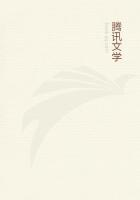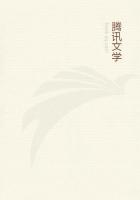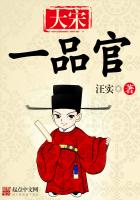The religions of the earth do not greatly differ in rites and forms; they do greatly differ in what they teach. It is as if a man were to say, "Do not be misled by the fact that the CHURCH TIMES and the FREETHINKER look utterly different, that one is painted on vellum and the other carved on marble, that one is triangular and the other hectagonal; read them and you will see that they say the same thing." The truth is, of course, that they are alike in everything except in the fact that they don't say the same thing.
An atheist stockbroker in Surbiton looks exactly like a Swedenborgian stockbroker in Wimbledon. You may walk round and round them and subject them to the most personal and offensive study without seeing anything Swedenborgian in the hat or anything particularly godless in the umbrella. It is exactly in their souls that they are divided. So the truth is that the difficulty of all the creeds of the earth is not as alleged in this cheap maxim: that they agree in meaning, but differ in machinery. It is exactly the opposite.
They agree in machinery; almost every great religion on earth works with the same external methods, with priests, scriptures, altars, sworn brotherhoods, special feasts. They agree in the mode of teaching; what they differ about is the thing to be taught.
Pagan optimists and Eastern pessimists would both have temples, just as Liberals and Tories would both have newspapers. Creeds that exist to destroy each other both have scriptures, just as armies that exist to destroy each other both have guns.
The great example of this alleged identity of all human religions is the alleged spiritual identity of Buddhism and Christianity.
Those who adopt this theory generally avoid the ethics of most other creeds, except, indeed, Confuciani**, which they like because it is not a creed. But they are cautious in their praises of Mahommedanism, generally confining themselves to imposing its morality only upon the refreshment of the lower classes.
They seldom suggest the Mahommedan view of marriage (for which there is a great deal to be said), and towards Thugs and fetish worshippers their attitude may even be called cold. But in the case of the great religion of Gautama they feel sincerely a similarity.
Students of popular science, like Mr. Blatchford, are always insisting that Christianity and Buddhism are very much alike, especially Buddhism. This is generally believed, and I believed it myself until I read a book giving the reasons for it.
The reasons were of two kinds: resemblances that meant nothing because they were common to all humanity, and resemblances which were not resemblances at all. The author solemnly explained that the two creeds were alike in things in which all creeds are alike, or else he described them as alike in some point in which they are quite obviously different. Thus, as a case of the first class, he said that both Christ and Buddha were called by the divine voice coming out of the sky, as if you would expect the divine voice to come out of the coal-cellar. Or, again, it was gravely urged that these two Eastern teachers, by a singular coincidence, both had to do with the washing of feet. You might as well say that it was a remarkable coincidence that they both had feet to wash. And the other class of similarities were those which simply were not similar.
Thus this reconciler of the two religions draws earnest attention to the fact that at certain religious feasts the robe of the Lama is rent in pieces out of respect, and the remnants highly valued.
But this is the reverse of a resemblance, for the garments of Christ were not rent in pieces out of respect, but out of derision; and the remnants were not highly valued except for what they would fetch in the rag shops. It is rather like alluding to the obvious connection between the two ceremonies of the sword: when it taps a man's shoulder, and when it cuts off his head. It is not at all similar for the man. These scraps of puerile pedantry would indeed matter little if it were not also true that the alleged philosophical resemblances are also of these two kinds, either proving too much or not proving anything. That Buddhism approves of mercy or of self-restraint is not to say that it is specially like Christianity; it is only to say that it is not utterly unlike all human existence.
Buddhists disapprove in theory of cruelty or excess because all sane human beings disapprove in theory of cruelty or excess.
But to say that Buddhism and Christianity give the same philosophy of these things is simply false. All humanity does agree that we are in a net of sin. Most of humanity agrees that there is some way out.
But as to what is the way out, I do not think that there are two institutions in the universe which contradict each other so flatly as Buddhism and Christianity.
Even when I thought, with most other well-informed, though unscholarly, people, that Buddhism and Christianity were alike, there was one thing about them that always perplexed me;
I mean the startling difference in their type of religious art.
I do not mean in its technical style of representation, but in the things that it was manifestly meant to represent.
No two ideals could be more opposite than a Christian saint in a Gothic cathedral and a Buddhist saint in a Chinese temple.
The opposition exists at every point; but perhaps the shortest statement of it is that the Buddhist saint always has his eyes shut, while the Christian saint always has them very wide open.
The Buddhist saint has a sleek and harmonious body, but his eyes are heavy and sealed with sleep. The mediaeval saint's body is wasted to its crazy bones, but his eyes are frightfully alive.
There cannot be any real community of spirit between forces that produced symbols so different as that. Granted that both images are extravagances, are perversions of the pure creed, it must be a real divergence which could produce such opposite extravagances.
The Buddhist is looking with a peculiar intentness inwards.

